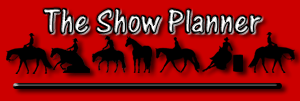INTERPRETING FEED TAGS (part 7)
By Eleanor Richards
Copyright © 2004
Ingredients
Flour, sugar, butter, eggs, baking soda, salt, milk: ingredients to make a cake. Making horse feed is much like making a cake.
Look at the tag on the bag to see the ingredients.
Does the tag list grain products, plant protein products, processed grain products, forage products and roughage products? Or does it list corn, barley and oats?
There was a time, and many people still believe this, if the ingredient list stated the mix contained grain products, plant protein products, processed grain products, forage products and roughage products it was an inferior product. The reason for this belief was the term called Least Cost Formulation.
Least Cost Formulation allows the use of a lower priced ingredient to replace a higher priced ingredient in order to keep the price down. The nutrition in the feed remains constant, but the ingredients can change.
Today many reputable feed companies list the ingredients as "products" for other reasons.
Geographical Region: A large company that manufactures feed at different mills in the United States will use the "product" listing method because it allows them to use the grains available in the area without having to print numerous tags. A specific feed purchased in Ohio will have the same feed tag as one purchased in California - but the feed will be formulated for each region.
Nutritionally Accurate: Reputable companies frequently test ingredients for nutrition levels. The nutrient analysis in grains can fluctuate, so by using the "product" listing method amounts can be adjusted in order to keep the ration balanced.
Purina Mills has coined a term for this method of formulation: Constant Nutrition Formulation™. The ingredients in every batch of feed produced are adjusted so the nutrition is constant mix to mix. The feed tag is accurate.
Confidentiality: Reputable companies spend huge amounts of money on research, and in order to protect the feed from being copied by competing firms, the "product" listing method is used.
The bottom line when trying to decide if you want to feed the formula using the "product" listing method is the reputation of the manufacturer. Is it a reputable company that spends money on research, has research farms where the ration is being tested and has a support staff to help you with your questions?
Listing the ingredients by using the actual grain names is nice-it makes it easier for you to know exactly what is being used in the ration.
What is in grain products, plant protein products, processed grain products, forage products and roughage products? The ingredients used can be any or all contained in the list.
Grain products: barley, corn, oats, wheat, rice, rye.
Plant protein products: cottonseed meal, linseed meal, soybean meal, heat processed soybeans, cultured yeast.
Processed grain by-products: brewers dried grains, distillers dried grains, corn gluten meal, wheat middlings, rice or wheat bran.
Forage products: alfalfa meal, grass hay.
Roughage products: beet pulp, hulls (barley, oat, peanut or rice).
Generally the ingredients are listed according to the amounts in the mix. The first one listed is the greatest amount and the last one listed is the least.
The ingredients used to insure the formula provides adequate vitamins and minerals are listed next. If a preservative was used and molasses was added those will also appear in the ingredient list.
While many of us may experiment with ingredients when making a cake (sometimes to disastrous and inedible results), feed companies do not take that chance. They know horse owners trust them to insure the ingredients in the formula are edible and safe.

